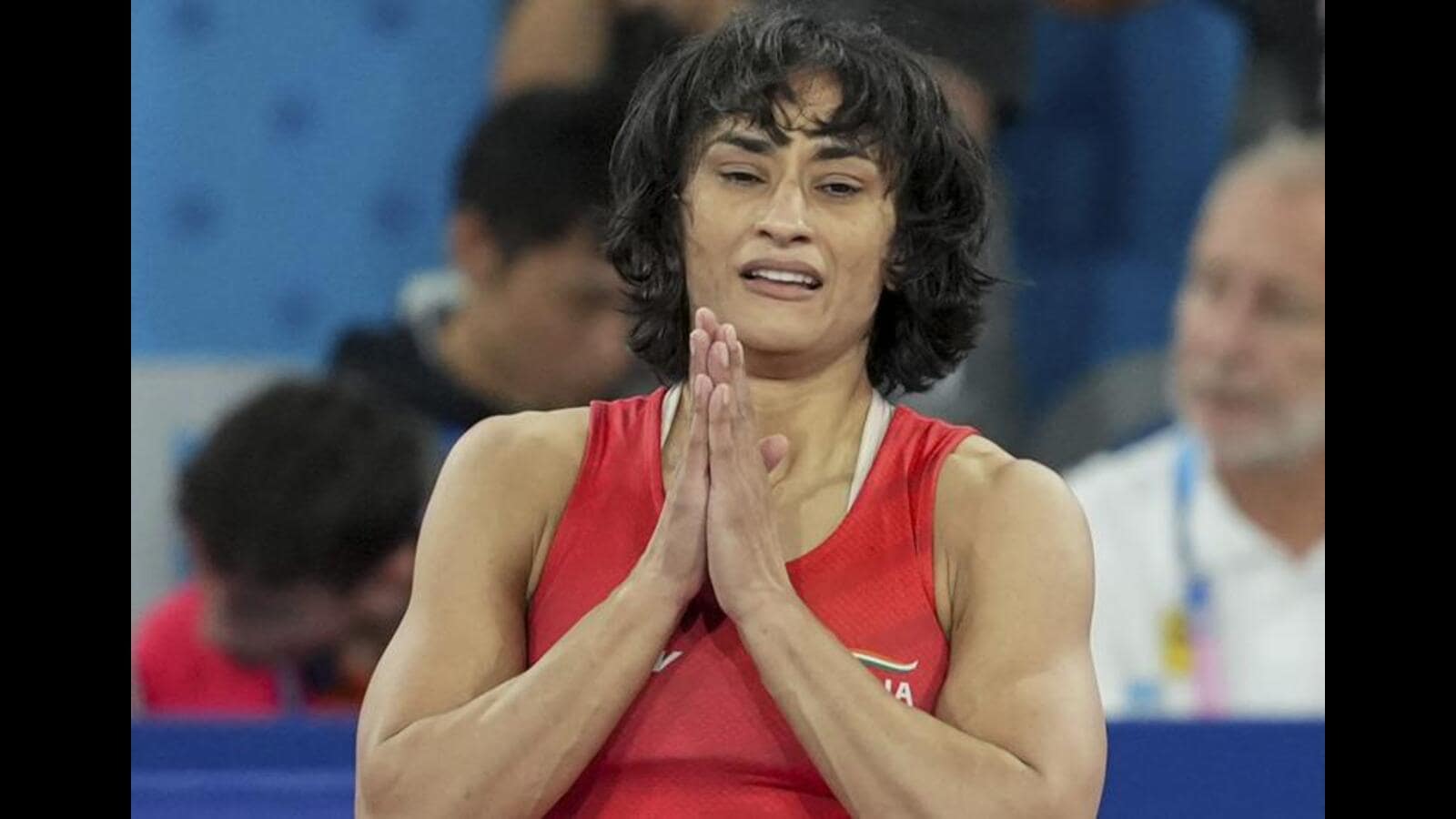Cutting body weight, they say, is tougher than beating the best in business. Unfortunately for Vinesh Phogat, it came true on Wednesday morning when she was deemed overweight by 100 grams at the weigh-in. Scheduled to meet USA’s Sarah Ann Hildebrandt for the gold medal bout in the women’s 50kg final, the 29-year-old failed to make the weight and will consequently finish last in her weight class.
“This is unbelievable. It is tough to imagine how something like this could happen to such an experienced wrestler. Athletes know their bodies very well.

They know what to eat and how much the night before their bout. The coaching staff knows it too. Whatever has happened is terrible,” said Lalit Kumar, the Dronacharya Award-winning wrestler coach of Aman Sehrawat who will be in action later in the competition.
Why does not Phogat get a silver and cannot compete for a bronze? As per Article 11 of the United World Wrestling (UWW) rulebook, the wrestler failing to meet the weight at the weigh-in is disqualified. If such a scenario arises in boxing, the overweight pugilist gives a walkover to the opponent, but disqualification means the erring wrestler finishes last. “If an athlete does not attend or fail the weigh-in (the 1st or the 2nd weigh-in), he will be eliminated from the competition and ranked last,” says the rule.
Was Phogat’s semi-final win legal? Her run to the semis was perfectly legal. Weigh-ins happen in the morning of all competition days and the participating wrestlers need to make weight in each weigh-in. Vinesh made the weight on Tuesday morning, following which she would have fed herself to regain energy.
What transpired on the night between the qualification and medal rounds? In elite competitions, the qualification and medal rounds are held on separate days to allow wrestlers enough recovery time. The wrestlers usually weigh themselves at the end of the day and Phogat would have done the same to assess what and how much she should eat. The food intake also depends on wrestlers’ body type and metabolism.
The next morning, the wrestlers typically wake up three hours before the scheduled weigh-in and check their weight. Depending on how much they are in excess, the coaches and physiotherapists put them to work. A mat session or a gym session is typically followed by a sauna.
Skipping is another go-to method. In Paris, the weigh-in window was 15 minutes, meaning Phogat had to weigh 50kgs (or less) for those 15 minutes following which she could have replenished herself. Weigh-ins happen in the singlet and no allowance is given for the weight of the singlet.
While in domestic competitions and even in some international events, certain weight relaxation is allowed, at the Olympics, neither boxing nor wrestling allows any such luxury. Phogat’s final was scheduled about 26 hours after her previous bout, giving her time to reset and recover. Is cutting weight so tough? It is, but over time, wrestlers and boxers find a way to do it.
Phogat’s maintenance weight is around 56 kg and she has been a regular 53 kg wrestler over the past five years. To stay in a caloric deficit while maintaining the required muscle mass is tough. Wrestlers stop their water intake hours before the weigh-in to get rid of the water weight, making them feel weak and irritable.
Post-weigh-in, the diet is usually carb-rich, with fruit juices and bananas being the go-to option..



















